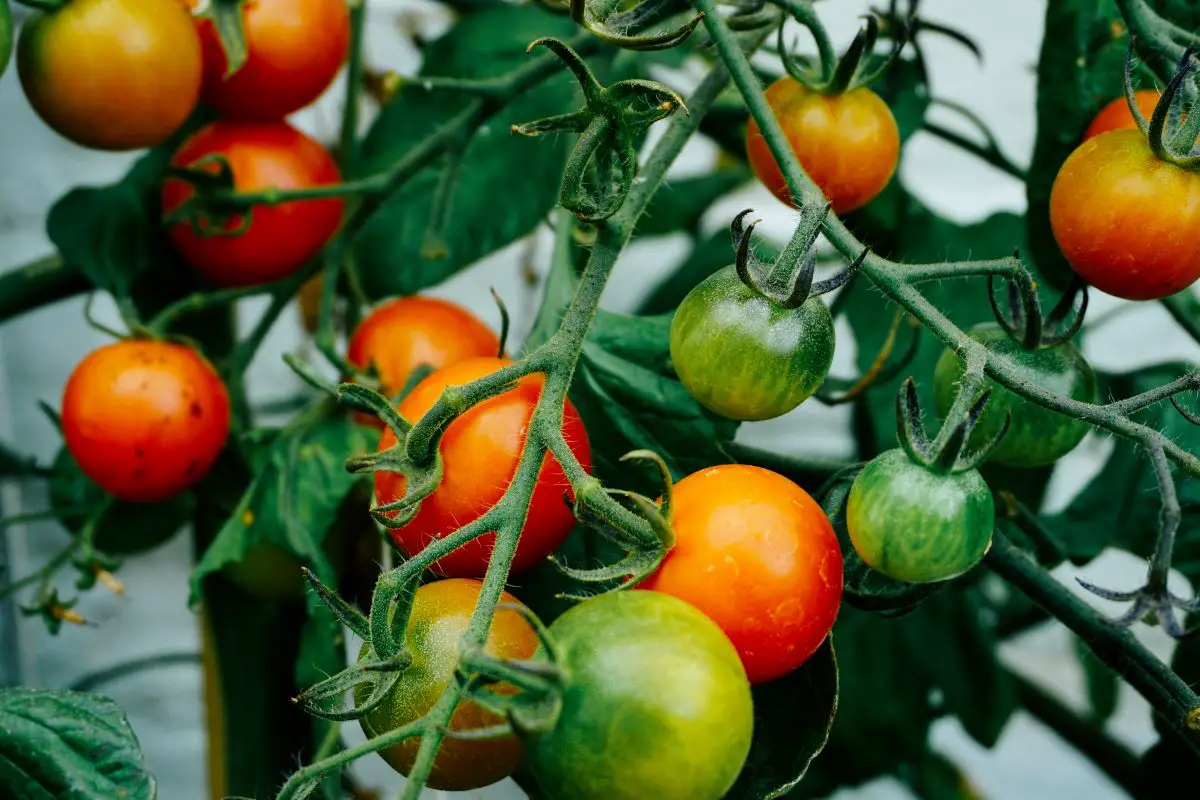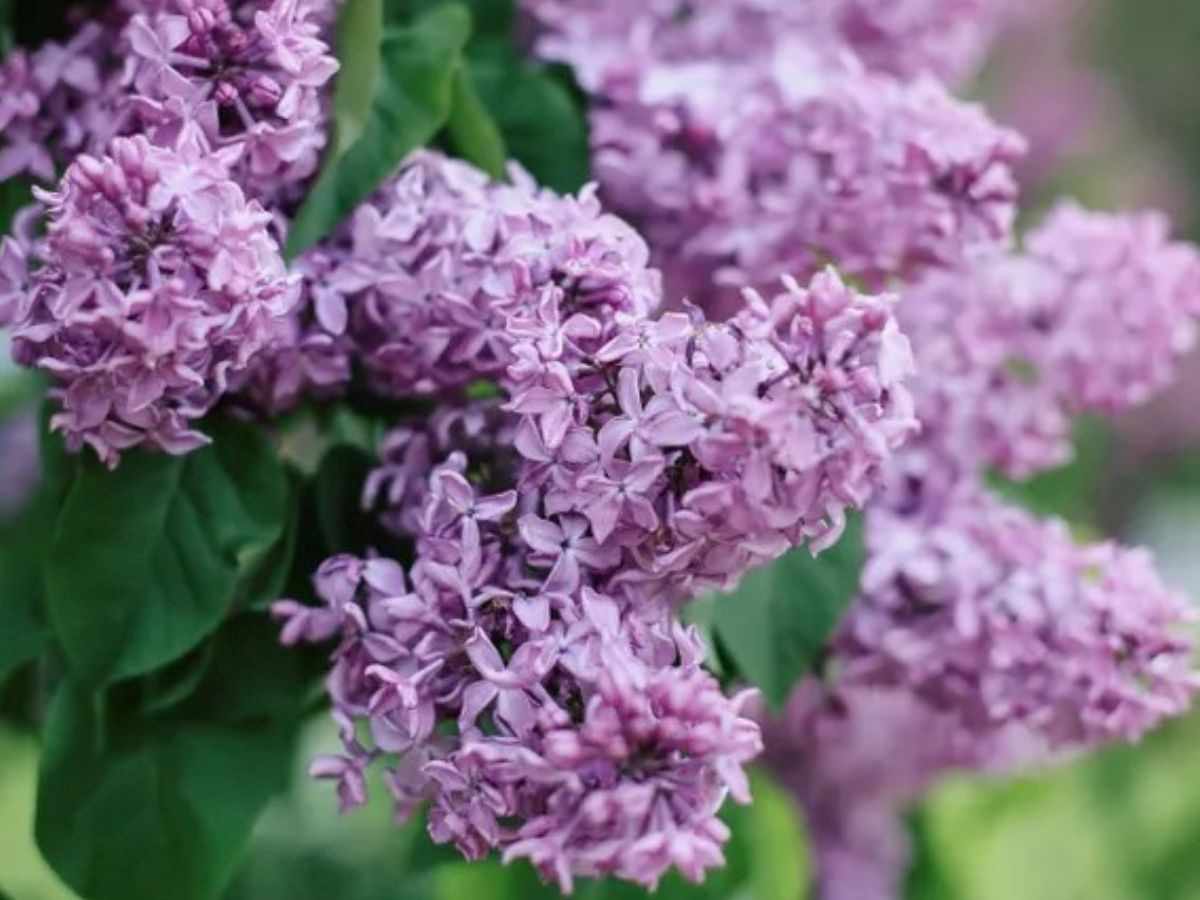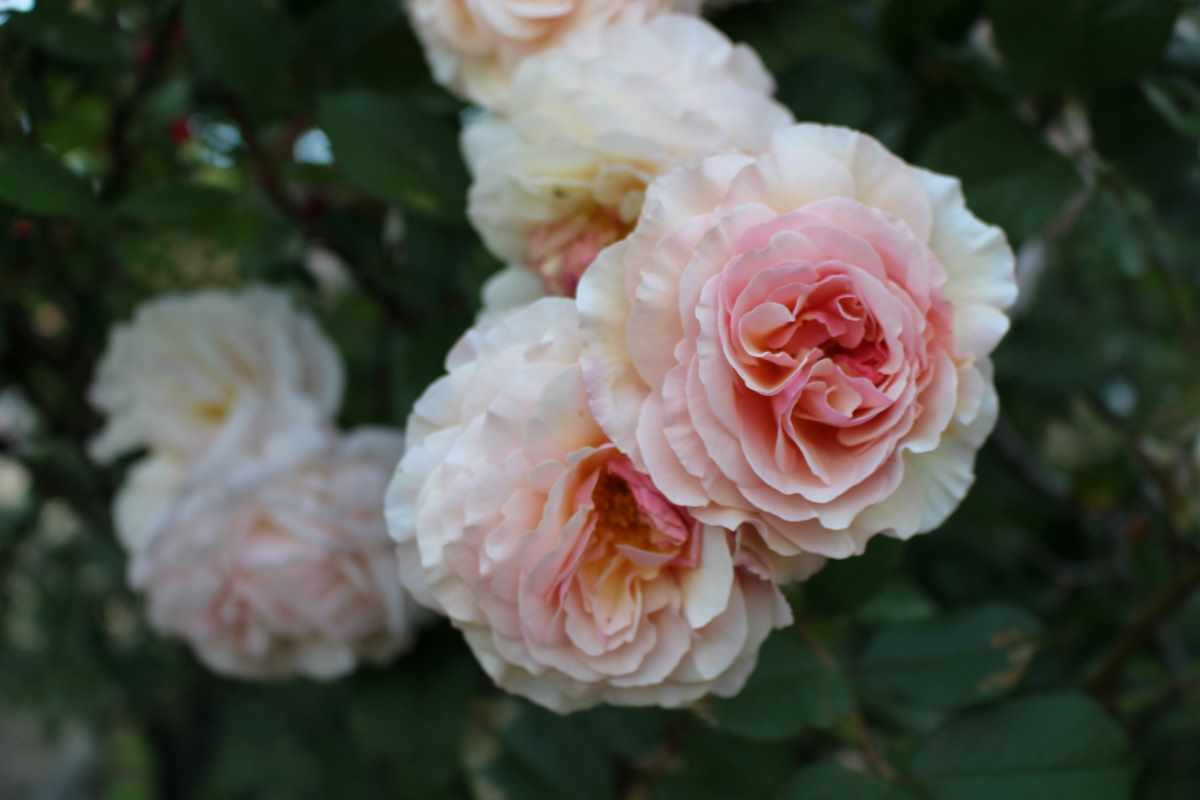Learn how to grow tomatoes in this step by step guide. From seed to harvest. Homegrown tomatoes are known for their amazing flavors that no store bought tomato could ever beat. The varieties that you could grow in your home garden, or container garden are numerus. One tomato plant could give you up to 30 pounds of tomatoes depending on the variety. I hope I have given you enough reasons to grow your own tomato plants.
Table of Content
- How to Grow Tomatoes From Seed to Harvest
- Is It Too Late to Start Tomatoes From Seed
- Should I Soak Tomato Seeds Before planting
- What Is an Indeterminate Tomato Plant
- What Is a Determinate Tomato Plant
- When Should You Start Tomato Plants Indoors
- Do Tomato Plants Need Sun
- Can I Plant My Tomato Plant in a Pot – How to Grow Tomatoes in a Pot
- Do Tomatoes Grow Indoors
- How Many Tomatoes Will One Plant Produce
- How Do I Get My Tomato Plants To Produce More Fruit
- The Importance of Pruning Your tomato Plants
- Is Pollination Required for Tomato Plants
- Do Tomato Plants Need Support
- What Type of Soil Do Tomato Plants Like
- How Deep Should I Plant My Tomatoes
- Sign Up to Our News Letter!
- More Gardening and Recipe Related Topics
- Shop This Post
- Disclosure Policy
Planting Tomatoes in Early May Zone 5 Video
How to Grow Tomatoes From Seed To Harvest
- If starting from seeds, you’ll want to plant your tomato seedlings 6 to 8 weeks before your average last frost date.
- Start by moistening the seed starting mix with some warm water. When done, the mix should be moist but not dripping wet.
- Place the seed starting mix into a self-watering seed starting tray. Gently press the seed starting mix down into the tray to remove any large air pockets.
- Plant two tomato seeds into each cell about 1/8 to a 1/4 inch deep. Once the seeds are planted, keep them moist until they germinate. Any seeds that dry up will not germinate.
- Water tomato seedlings on a regular basis to keep the soil moist.
- After the first set of true leaves, or leaves that resemble actual tomato leaves, appear, begin to fertilize the seedlings using an organic fertilizer at half strength of the recommended amount for mature plants. Do so once a week, or once every two weeks.
- If you end up with two tomato seedlings in each cell, you can either snip the top off the weaker seedling, or remove the tomatoes from their cells, gently separate them, and plant them into larger pots.
- You will need to provide the seedlings with a source of light by placing them either in front of a south facing window, or under a grow light.
How to Grow Tomatoes Outdoors
- Harden off the tomato seedlings by taking them outside daily starting at 1 to 2 hours, and increasing that amount by 1 to two hours each day.
- Plant the hardened tomato seedlings in your outdoor garden, or in a pot on your patio, one to two weeks after your last frost date.
- Fertilize with an organic fertilizer, and top dress the soil with organic compost.
- Keep the soil moist, and prune the bottom leaves to prevent disease.
- Provide your tomato plants with a form of support such as a tomato cage or a stakes.
- If you have an indeterminate tomato plant, prune off the suckers that shoot off the sides of the tomato plant.
- If you have a determinate tomato plant, you shouldn’t need to prune it excepting the few bottom leaves.
- Harvest tomato fruits when ripe or while they are still a bit green. You can ripen tomatoes in a paper bag, or on your window sill.
- To Learn more about starting plants from seeds you can check out the How to Start Seeds Indoors blog post.
Is It Too Late to Start Tomatoes From Seed – How To Grow Tomatoes

Tomato plants vary in maturity dates. Some tomato plants mature at 60 days, some at 90, and there is even a variety that matures at 40 days.
The time to reaching maturity simply means from planting the plant directly into the ground or a in a large pot until the plant begins to produce fruits. So a 90 day tomato would be a plant that begins to produce fruits after 90 days from planting it directly into the ground.
If you think it is still too late in the season, you can choose a verity that matures quickly.
How to Extend Your Tomato Season
You can also extend the season by providing frost protection for your tomato plants in the fall when frost is expected, and temperatures begin to dip below 40 or 45 degrees F.
You can use PVC pipes to create a hoop house structure over your tomato plants. Place some heavy duty transparent plastic over the hoop house you created, and secure it with large clips, or rocks on each side of the hoop house.
If you are providing your plants with a plastic or frost protection, you want to uncover the plants during the heat of the day to allow air circulation, and prevent them from getting a heat shock.
Too much humidity is a great place for fungus and disease to grow on your tomato plants. That is why keeping your tomato plants well pruned is very important because it allows good air circulation.
Should I Soak Tomato Seeds Before planting
I personally do not see the value in soaking your tomato seeds. Tomato plants sprout in 10 to 14 days.
If you do soak your seeds, you should not soak them for longer than 24 hours. And remember that once moisture is introduced to a seed, that seed begins the sprouting process.
If the seed dries up during that process it will die and never germinate. So it is always important to keep your seeds moist during the germination process. Never allow them to dry up.
I have had a wonderful success over the years in growing tomatoes from seeds without soaking them before planting. In fact, I have never soaked any tomato seeds in my life, and I have never purchased a tomato plant.
I have always started my tomato plants from seeds.
What Is an Indeterminate Tomato Plant
Tomato plants fall into three different categories. Determinate, semi-determinate, and indeterminate.
An indeterminate tomato plant keeps growing and spreading itself. The more you prune off the side shoots, also known as suckers, the taller the tomato plant gets. An indeterminate tomato plant can reach up to 10 feet and even taller sometimes if appropriate support is provided.
You will need to provide your indeterminate tomato plant with a stacking system. Use some twine or special plant twist ties to tie your tomato plants to the stakes.
What Is a Determinate Tomato Plant
A determinate tomato plant is a shrub like plant. It grows to a predeterminate height. It usually stops growing once it reaches that height, or it may grow a few more inches. A Determinate tomato plant also has a determinate amount of fruits. Once it sets its flowers, that’s it, those are the fruits that you are going to get.
Another fact about Determinate tomato plants is that their fruits ripen all at the same time. Which makes them perfect for canning.
If you are planning on having multiple tomato harvests, and some to snack on throughout the season, plan on planting indeterminate, and determinate tomato plants. This will allow you to have plenty for snacking, salads, and cooking, and a one time harvest for canning purposes.
Determinate tomato plants generally do not need to be pruned. However, you should always prune the bottom set of leaves. You do not want any leaves touching the ground because that can bring soil born diseases onto the plant.
Like indeterminate plants, determinate tomato plants also require support unless they are a dwarf variety like the tom thumb tomato.
When Should You Start Tomato Plants Indoors
If you are starting tomato plants from seeds, you will need to start them about six to eight weeks before your average last frost date.
You can find out your average last frost date by typing your zip code , and the words “average last frost date” and you can quickly find out when will that be.
Once you find out your last frost date, count backwards 6 to 8 weeks from that date. The last day of the 6 or 8 weeks that you fall on when you are counting backwards is the day that you should plant your tomato seeds.
Also consider the varieties of tomatoes and how long it takes them to mature before you decide on planting them.
How to Grow Tomatoes Under a Grow Light
If you live in an area with a short growing season like I do, you might want to consider investing in a grow light system, or you can follow the direction in the blog post “How to start seeds indoors” to see how you can make your own DIY grow light system.
Having a grow light system is a good thing regardless of whether you want to start your seeds early or on time.
Seedlings that are placed in front of a window usually tend to grow a bit leggy or stretched out. A grow light with the proper energy output will allow your seedlings to grow large leaves and healthy stems.
Having an oscillating fan in your growing area is also very critical. The fan helps with two things.
First it helps in strengthening the stems of the seedlings by exposing them to gentle wind.
Second it helps in preventing algae from accumulating on the surface of your seed starting mix because it helps in drying up the soil quicker. This also means that you might need to water your seedlings a bit more frequently than you are used to.

How to Ensure Your Tomato Seedlings Are Healthy
If you decide on planting your tomato seedlings indoor earlier than the recommended time in order to have an earlier harvest, you will need to pot up your tomato seedlings a couple times before the temperatures outside are fit for planting.
Remember to fertilize your seedlings once a week with an organic fertilizer at half strength after they get their first set of true leaves. Once the plants are large enough and have thick stems and large leaves, you can begin to fertilize them at full strength.
Do Tomato Plants Need Sun – How to Grow Tomatoes
Tomato plants thrive in the sun. They need at least 6 to 8 hours of sunlight. However, tomato fruits should be protected from the sun until they are large enough to ripen.
Tomato fruits are typically protected from the sun by the leaves of the plants. However, if you accidently pruned your tomato plants a bit too much, you can protect the fruits by using a light layer of frost protectant cover. This will provide enough shade for the fruits to grow before they are ready to ripen.
Once the fruits are large enough to ripen, you can remove the cover and allow the sun to bathe the fruits with its rays. Your tomatoes should ripen very quickly right after that.
Can I Plant My Tomato Plant in a Pot – How to Grow Tomatoes in a Pot
Tomatoes are a perfect plant to stick in a pot. They do not have deep roots, and they typically grow vertically if provided with the support they need.
You can also plant some basil and marigold plants near your potted tomatos to repel pests, and provide some soil coverage. The smaller plants would act as mulch to the soil.

How to Care for Potted Tomato Plants
Potted tomatoes will need to be fertilized on a regular basis because the nutrients tend to leach out of the potted soil every time you water your plants.
You can use either an organic slow release fertilizer, or an organic liquid fertilizer. The liquid fertilizer should be used on a weekly basis, While the slow release fertilizer can be used on a monthly basis.
Keep your potted plants well watered. The soil should always be moist, but not muddy.
If the soil dries up in your pot, your tomato plant could die very quickly. Unlike the ground, a pot does not have a cooling system and a reservoir of water in the deeper layer. Pots tend to get hot very quickly especially if they are a darker color.
You might need to provide your potted tomato plant with a bit of afternoon shade in the heat of the summer to protect the soil in the pot from getting too hot.
Do Tomatoes Grow Indoors
Tomatoes can definitely grow indoors. If you are growing tomatoes indoors, you might want to choose a variety that does not grow too big such as the tom thumb tomato, spoon tomatoes and many other varieties.
Determinate tomato plants are wonderful for growing indoors because they do not grow too tall, and they typically do not take much real estate space.
How to Grow Tomatoes Indoors
If you are growing your tomato plants indoors, you will need to provide the plants with adequate lighting. You can use a high lumen LED light or a grow light over your plants to provide them with the light they require to thrive.
When using grow lights or LED lights over a plant, you will need to provide it with that light for longer hours than your typical sunlight hours. 14 to 16 hours is about the amount of time that you will need to provide artificial light for your plants.
Having an oscillating fan is a very important factor in growing plants indoors. A fan will strengthen the stems of the tomato plants and prevent them from braking easily, it will also dry up the air a bit and prevent mold, mildew, and fungus from occurring.
How to Prune Indoor Tomato Plants
The same pruning rules that apply to outside tomato plants also apply to indoor tomato plants. Always prune the bottom leaves to prevent soil born funguses and diseases from occurring on your tomato plants.
Some people choose to not prune their indeterminate tomato plants. In my opinion, this makes them super thick and bushy, and causes them to be susceptible to all sorts of ailments.
Always provide your indoor plants with a good organic fertilizer.
How Many Tomatoes Will One Plant Produce
A tomato plant can produce between 10 to 30 pounds depending on the variety of the tomato plant. There are many factors to take into consideration that can affect tomato yield.
If your tomato plant is stressed, not getting enough or the proper nutrients, water, or if it is too hot, it will slow down its production.
In perfect conditions, a tomato plant might give you more than the average yield.

How Do I Get My Tomato Plants To Produce More Fruit
Tomatoes require more nitrogen, calcium, and magnesium in the early stages of their life. Nitrogen encourages leaf and stem growth on the plants.
Once the tomato plants are large, and strong enough and are ready to bear fruits, you can provide them with a bit less nitrogen, and more phosphorus, potassium, calcium, and magnesium.
Phosphorus and potassium encourages fruits production, while calcium and magnesium prevent root rot, blossom end rot, and in general keep the plant healthy.
If you find this too complicated, you can simply provide your tomato plants with an organic fertilizer that is specifically designed for tomatoes. Fertilize them in early season, mid season, and late season for best fruit production and plant health.
The Importance of Pruning Your tomato Plants
Tomato plants fall into three categories, determinant, semi determinant, and indeterminant. They all require some sort of pruning, but not the same rate of pruning.
How to Prune Determinant And Semi Determinant Tomato Plants
Determinant and semi determinant tomato plants need to be gently pruned. Because they are determinant, they grow to a predetermined size, and bear a specific amount of fruit and no more. If you prune those fruits you will lose your crop.
To prune your determinant and semi determinant tomato plants, prune the bottom set of leaves, or any leaves that are touching the soil. This will prevent the plants from getting soil born illnesses and diseases.
How to Prune Indeterminant Tomatoes
Indeterminant tomatoes continue to grow as long as they have the space to grow. They can grow 10 to 12 feet tall and even taller.
Some people choose to not prune their indeterminant tomato plants in order to get more tomato fruits. However, in doing so they sacrifice the ability to get larger fruits, and they risk the occurrence of mold and mildew on the plants.
Indeterminant tomato plants have branches that stick out from between a leaf node and a stem. Those are known as suckers. They should be pruned as soon as seen in order to keep the energy on the main tomato branch and allow the plant to produce larger fruits.
Be careful not to prune the top of the tomato plant as it will prevent the tomato from growing any taller.
If you are confused of which is a sucker and which is the leading branch because they are too close together, you can wait until they are a bit bigger. Once they grow you will be able to clearly see which one is the leading branch and which one is the sucker.
The leading tomato branch will grow straight up, while a sucker will grow in a varying direction.
Is Pollination Required for Tomato Plants
Tomato plants are self pollinating. Each flower has both an anther and a stigma. The pollen transfers from the anther to the stigma in the same flower or to another flower.
The easiest way to pollinate tomato plants is to simply shake them gently. You can gently tap the main stem of the tomato plant. The vibrations will cause the pollen to transfer onto the stigma and pollinate the flowers.
You can plant multiple tomato varieties next to each other with very little chance of them cross pollinating.
Do Tomato Plants Need Support
Tomato plants are a vining plant. Support is super important for them to prevent their stems from braking and prevent them from sprawling all over the ground.
When tomato fruits and leaves touch the dirt, they become susceptible to fungus, mold, rot, and all sorts of diseases.
You can provide support for your tomatoes with tomato cages, stakes, or twine strings that hang from a structure.
For support you can also use cattle panel trellising, and obelisks.
What Type of Soil Do Tomato Plants Like
Tomato plants prefer a slightly acidic soil of a ph ranging from 6.2 to 6.8. They require a well draining fertile soil.
Providing your plants with an organic compost, worm castings, and a good organic fertilizer that is specifically designed for fruit production should keep your tomato plants happy and healthy.
Too much nitrogen in the fruiting stage of your tomato plants will give you vigorous leaf production, but very little fruit production.
The plants still require some nitrogen during the fruiting stage, but they do require more phosphorus in order to bear fruit.
Potassium, calcium and magnesium are also important elements to your soil to keep your fruits healthy and prevent blossom end rot.
How Deep Should I Plant My Tomatoes
Tomato plants have tiny hairs all along their stems. These tiny hairs are known as trichomes.
Trichomes protect the plants from weather, and from insects that feed on plants’ vegetation.
Trichomes fall into several groups. Each group is responsible for a specific action or defense mechanism in the plant.
Some of these trichomes or tiny hairs, turn into roots when buried under ground.
When planting your tomato plants, remove some of the bottom leaves, and leave about 3 to 4 sets of leaves on the plants. Dig a deep hole, and burry the plant to about an inch below the first set of leaves.
If your tomato plant is too long, you can dig a small trench, lay the plant on it’s side, and gently tilt it up to where the leaves are sticking up about 1 inch above the ground.
Cover the part of the plant you placed down in the trench with dirt, and water it until the soil is moist.
Like most vines, tomatoes will develop roots along their stems where the stem touches the ground.
Sign Up to Our News Letter!
Pin This Post!

More Gardening and Recipe Related Topics
Rustic Swiss Chard Tart – Gluten Free
Shish Tawook Mediterranean Chicken Shish Kabob Recipe
Shop This Post
self-watering seed starting tray
Disclosure Policy
Disclosure: Some of the links in this post are “affiliate links”. This means if you click on a link and purchase the item, I will get an affiliate commission. It will not cost you any extra money, but it will help me pay for this website, and it will help me to keep providing you with helpful articles such as this one. I only post links to products that I personally use and love, or to products that I wish I could have, and that could be of value to you. The information that I provide you with, my blog, videos, and many resources are free.





Be the first to reply